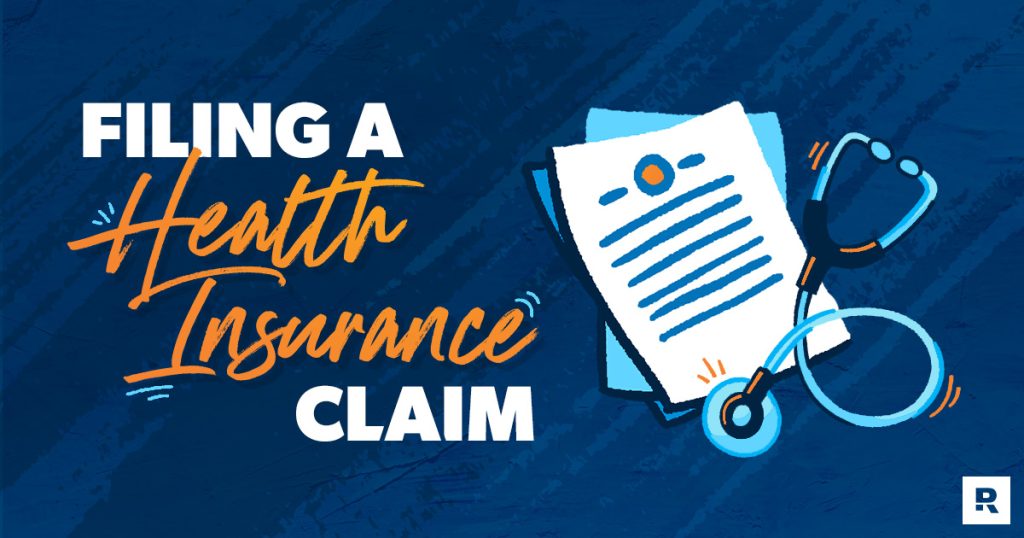When you or a loved one gets sick and needs health care, the last thing you want to think about is filing an insurance claim. Health care can be complicated and full of jargon—and there’s often a huge amount of paperwork involved. If you don’t dot your I’s and cross your T’s, your insurance company can reject your claim.
So, if you do find out you have to file a claim, how do you know if you’re doing it correctly? Okay. Take a deep breath. Let’s walk through how to file an insurance claim form.
How to File an Insurance Claim Form
When you get medical care, you usually don’t even see the claim. For example, if you have a sinus infection, you call your doctor, set up an appointment, have a quick exam, and maybe get a prescription for antibiotics. You pay your co-pay and they send you on your way. The doctor’s billing department fills out a health insurance claim form—usually a CMS-1500, also known as a pink sheet because of its distinctive color.1 They send it to your insurance company and it’s the last you hear of it.
Well, that’s the way it usually works. Depending on your health insurance plan and the kind of services you receive, you may have to file an insurance claim form yourself.
Here’s a scenario: You and your family head to another state for a long ski weekend. One day, while cruising down the slopes, you hit that mogul going just a little too fast. You wipe out and break your leg. One quick ambulance ride to the emergency room later, you get an X-ray, a cast and a pair of crutches.
Depending on your health insurance plan and the kind of services you receive, you may have to file an insurance claim form yourself.
Oh, and you also get a giant bill because the small-town hospital is out of your network and won’t work with the insurance you have from three states away. You’re going to need to file a health insurance claim form. Here’s what you need:
1. Claim Form
Your insurance company should have a health insurance claim form on their website. This will be a special claim form specific to your health plan. They’ll probably have a way to file the claim online, which is nice. But you should also be prepared to print the claim form and mail it in. Here are some things you may need to include on the form:
- Your insurance policy number, member number or group plan number
- The name of the patient receiving medical treatment (you, your spouse, your child or anyone covered under your plan)
- Whether or not you have dual coverage or coinsurance
- The reason for the treatment (like an injury, illness or preventive care)
If you get into an accident at work and workers’ compensation covers it, you may need to fill out lots of special paperwork and go through a different insurance company than your normal health insurance company. You’ll want to talk to your Human Resources representative or consult an attorney who specializes in workers’ compensation. This is also true if you get hurt in an auto accident or because of someone else’s negligence (like if you slip and fall on a wet surface inside of a business). These claims can get really complicated, and it’s good to have someone in your corner.
2. An Itemized Bill and Receipts
This is important. You absolutely must get an itemized bill from your provider. It should detail every service your doctor provided and include things like:
- Lab tests like blood work or urine tests
- Radiology exams like X-rays, MRIs and CT scans
- Cardiovascular tests like EKGs and echocardiograms
- Durable medical equipment like crutches or braces
In other words: If the doctor bills for it, you need to include it in the list. Each item should be on a separate line and should include the ICD-10 code (more on this below) for each procedure.
3. Copies of Everything
Make a copy of every single document you receive and put it into a file specifically marked for your claim. You’ll want to keep everything in one place so you can easily find anything you may need later. Insurance claim forms sometimes get denied or lost, and they’re subject to all kinds of shenanigans. So disputes can happen. Being able to quickly and easily refer to your paperwork is a lifesaver.
Once you have everything organized, it’s time to file the claim. Most of the time, you can do this online. But sometimes you may have to submit a claim form by mail. Contact your insurance company. They should be able to walk you through the submission process.
Make a copy of every single document you receive and put it into a file specifically marked for your claim. You’ll want to keep everything in one place so you can easily find anything you may need later. Insurance claim forms sometimes get denied or lost.
What to Do if Your Claim Is Denied
Okay, you’ve done everything right. You’ve dotted your I’s and crossed your T’s, you’ve sent everything in, and you’ve spoken with customer service. But a couple of weeks go by, and you get an Explanation of Benefits form that says your claim has been denied. Or maybe your insurance company approved part of the claim and paid some of it, but they denied another part.
Remember to breathe! It’s okay. Don’t panic. This happens a lot more often than you’d think. There are lots of reasons insurance companies deny claims. These could include:
- Coding errors: Every diagnosis that a medical provider determines you need has what’s called an ICD-10 code (short for International Statistical Classification of Diseases and Related Health Problems, 10th Revision). The ICD-10 code is used for billing and tracking diseases and treatments.2 If a provider bills for a treatment or procedure that isn’t linked to a particular diagnosis, it’s going to be rejected.
- Failure to get prior authorization: Some treatments—usually big, expensive things like surgeries or certain diagnostic studies like MRIs or colonoscopies—require the provider to get authorization from your insurance company before they’re performed. A lot of times, this is impractical or impossible—usually because it’s an urgent situation and there’s no time to get authorization. You can always appeal these.
- Missing or incorrect information: This is another common one, and it usually involves missing paperwork like a medical report. That’s why it’s important to collect all relevant data.
- Treatment is deemed medically unnecessary or experimental: Insurance companies may deny a claim because they don’t think the treatment is actually needed to make a patient well. Surgeries to correct deformities such as a deviated septum or varicose veins are common procedures that might be denied. A claims adjustor may look at the claim and deny it as a “cosmetic” procedure which isn’t typically covered by insurance.
- Treatment is not covered by your plan: Read your policy carefully. Depending on your policy and level of coverage, some treatments may just not be covered.
So, what do you do if a claim is denied? There’s always an appeals process. Just make sure you have all your records (including documentation of any phone calls) in order. If you’re documenting a phone call, Include the date, time and a reference number (if available). Always get the name of the person you talked to.
If your insurance company denies your claim because it’s deemed to be not medically necessary, you’ll most likely need to involve your health care provider. Most insurance companies have a medical professional (like a doctor or a registered nurse) who determines what is necessary and what isn’t.
Your doctor can set up what’s called a peer-to-peer review. Sometimes called a “doc-to-doc,” a peer-to-peer review involves your doctor speaking with the insurance company’s doctor to explain the medical necessity of the treatment or procedure. Always ask for one of these if your claim is denied for this reason.
You’ll also want to make sure you keep track of the date. Most insurance companies have a timeline for filing appeals. If your appeal gets there too late, they can refuse to consider it.
Health insurance is complicated and can drive just about anyone up the wall. If you’re shopping for health insurance or you don’t like your current policy and you’re looking for something else, we have some next steps for you to consider as you go deeper into your search for awesome coverage.
Read the full article here











